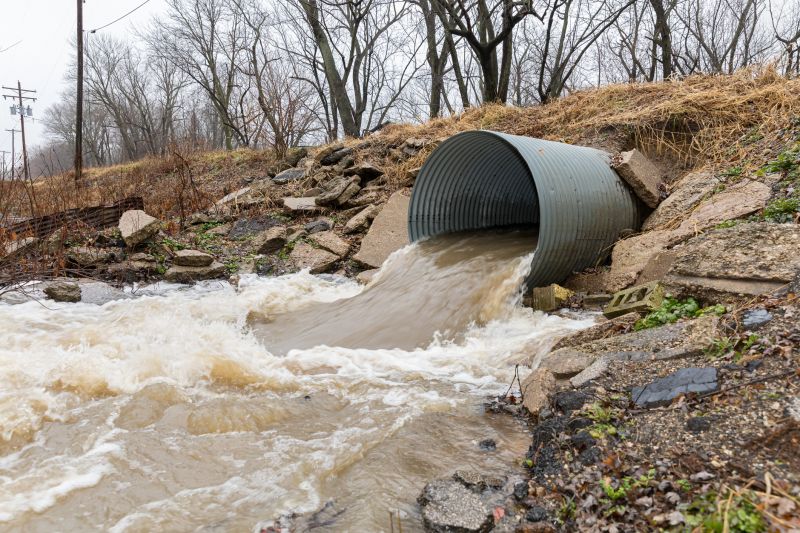Leading Culvert Repair Products for Reliable Infrastructure
Explore top-rated solutions designed to ensure durable and efficient culvert repairs for a variety of project needs.
 Culvert repairs are essential for maintaining proper water flow and preventing structural damage in infrastructure projects. When addressing culvert issues, selecting the right products can significantly influence the longevity and effectiveness of repairs. Various materials and tools are available to handle different types of damage, from minor cracks to major structural failures. Proper assessment of the culvert's condition and understanding the specific repair needs are crucial steps before choosing products. Durable and reliable repair solutions can help ensure that culverts continue to perform their vital function efficiently.
Culvert repairs are essential for maintaining proper water flow and preventing structural damage in infrastructure projects. When addressing culvert issues, selecting the right products can significantly influence the longevity and effectiveness of repairs. Various materials and tools are available to handle different types of damage, from minor cracks to major structural failures. Proper assessment of the culvert's condition and understanding the specific repair needs are crucial steps before choosing products. Durable and reliable repair solutions can help ensure that culverts continue to perform their vital function efficiently.
Top Overall Option
Multi-Purpose Culvert Repair Kit
This versatile repair kit offers a comprehensive selection of sealants, patching compounds, and liners suitable for various culvert repair needs. Designed to be user-friendly, it provides durable solutions that help restore structural integrity and prevent water leakage. Ideal for both minor and major repairs, this kit supports effective maintenance of culverts in different environments.
Types of Products For Culvert Repairs
Flexible Sealants
Used to fill small cracks and prevent water ingress, flexible sealants adapt to movement and temperature changes.
Epoxy Resins
High-strength epoxy compounds are suitable for patching and bonding damaged concrete or metal surfaces.
Polyurethane Foam
Expandable foam used for sealing larger gaps and voids within culvert structures.
Structural Liners
Rigid or flexible liners that reinforce and rehabilitate damaged culverts without excavation.
Cementitious Patches
Ready-mix or pre-formed patches for repairing concrete surfaces and restoring structural integrity.
Waterproof Coatings
Protective coatings that provide a waterproof barrier to prevent water penetration and damage.
Grouting Materials
Used to fill voids and stabilize foundations within culverts, ensuring a solid base.
Drainage Mats
Surface mats that facilitate drainage and reduce water buildup around culvert structures.
Pipe Rehabilitation Systems
Advanced systems designed to restore damaged pipes through lining and structural reinforcement.
Repair Clamps
Metal or composite clamps used to temporarily or permanently seal leaks in culverts.
Hydraulic Cements
Fast-setting cements suitable for quick repairs on concrete or masonry culverts.
Drainage Pipes
Replacement pipes in various diameters and materials for culvert reconstruction.
Repair Sleeves
Flexible sleeves that encase damaged sections of culverts for quick stabilization.
Corrosion Inhibitors
Chemical treatments to slow down metal corrosion within culvert pipes.
Popular Choices
Widely used for sealing small cracks and joints in culverts, offering adaptability to movement.
Commonly selected for repairing concrete and metal surfaces with high durability.
Popular for filling large voids and sealing leaks in culvert structures.
Favored for rehabilitating damaged culverts without excavation, restoring structural integrity.
Chosen for protecting culverts against water penetration and extending service life.
Popular for improving surface drainage around culvert entrances and exits.
Frequently used for quick, effective leak sealing in metal culverts.
Selected for rapid repairs on concrete culverts in need of immediate stabilization.
Commonly opted for replacing damaged pipe segments in culverts with minimal disruption.
Used for quick stabilization of damaged culvert sections, especially in emergency repairs.
Repair products range from flexible sealants to rigid patching materials, each suited for particular types of damage and environmental conditions. For example, flexible sealants are often used to fill small cracks and prevent water ingress, while heavy-duty patching compounds are suitable for larger surface repairs. Additionally, specialized liners and pipe rehabilitation systems can restore the structural integrity of damaged culverts without the need for complete replacement. It's important to consider the compatibility of repair products with existing infrastructure materials and the environmental conditions of the site.
Proper application techniques and curing times are also key factors in achieving durable repairs. Some products require specific surface preparation, such as cleaning or priming, to ensure optimal adhesion. Safety considerations, including the handling of chemical-based products, should be followed according to manufacturer instructions. Regular inspection and maintenance after repairs can extend the lifespan of the culvert and prevent future issues. By choosing appropriate, high-quality repair products and following best practices, infrastructure managers can effectively address culvert problems and maintain the integrity of water management systems.
Key Buying Considerations
- Assess the extent and type of damage to determine suitable repair products.
- Compatibility of repair materials with existing culvert construction (concrete, metal, plastic).
- Environmental conditions such as water flow, temperature, and exposure to chemicals.
- Ease of application and required surface preparation for optimal adhesion.
- Durability and longevity of the repair solution in the specific environment.
- Curing time and whether the repair process fits within project timelines.
- Safety considerations when handling chemical or heavy-duty repair products.
- Cost-effectiveness relative to the scope of repair needed.
- Availability of the product and ease of procurement.
- Manufacturer instructions and recommended application procedures.
- Potential impact on water flow and surrounding infrastructure during repair.
- Need for specialized tools or equipment for application.
- Post-repair maintenance requirements to ensure longevity.
- Regulatory compliance and adherence to local standards.
